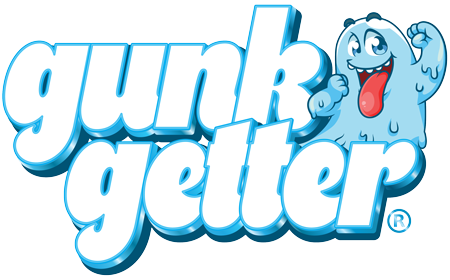Overview
This blog article explores dry cleaning and wet cleaning methods, detailing how each works, when to use them, their pros and cons, and tips for effective cleaning. Dry cleaning is ideal for delicate fabrics and oil-based stains, while wet cleaning is suited for everyday tasks. Understanding these methods helps in choosing the right cleaning approach for your needs, ensuring a clean and healthy home.
Frequently Asked Questions
1. What is dry cleaning?
2. When should I use dry cleaning?
3. What is wet cleaning?
4. When is wet cleaning the best option?
5. How do I choose between dry cleaning and wet cleaning?
Cleaning our homes can sometimes feel like a daunting task, but understanding different cleaning methods can make this job easier and more efficient. From dry cleaning to wet cleaning, each method has unique benefits and applications. In this post, we will explore the various cleaning techniques, their advantages, and how to choose the best approach for your cleaning needs. Whether you're tackling everyday messes or deep cleaning projects, learning about these methods will help you select the right cleaning products for home use.
Understanding Dry Cleaning
Dry cleaning is a process often associated with cleaning clothes, but it can be applied to various surfaces and materials within your home. The term "dry cleaning" doesn't mean that no moisture is used at all. Instead, it refers to a method that uses little to no water during the cleaning process. Instead, solvents or other cleaning fluids are typically utilized to lift dirt and stains.
How Dry Cleaning Works
The fundamental principle behind dry cleaning is a solvent-based approach. Here’s how it generally works:
- Solvent Application: A solvent is applied either through a machine or manually to dissolve oils and dirt.
- Agitation: The surface is agitated to loosen the dirt or stains effectively.
- Extraction: The solvent, along with the dirt, is then vacuumed or pulled away, leaving a clean surface.
When to Use Dry Cleaning
Dry cleaning is particularly beneficial for fabrics or items that cannot be exposed to water. Here are some typical applications:
- Delicate fabrics like silk and wool
- Upholstered furniture
- Carpets and rugs
- Specialty stains, such as those from oil or grease
Using appropriate cleaning products for home would ensure best results without damaging your items. Consider opting for a product designed specifically for dry cleaning to achieve optimal outcomes.
Unpacking Wet Cleaning
Wet cleaning is a more traditional method and involves using water and various detergents or soaps to clean surfaces. This cleaning method is often more straightforward than dry cleaning and suits a wide range of applications, from laundry to surfaces around your home.
How Wet Cleaning Works
The wet cleaning process typically involves several steps:
- Pre-treatment: Stains are pre-treated with specialized cleaning products to enhance their removal.
- Washing: The item is washed in water, doing away with dirt and grime effectively.
- Rinsing: Any remaining detergent is rinsed away to ensure no residue is left behind, which could attract more dirt later.
- Drying: The cleaned item is dried either through air drying or using a machine.
When to Use Wet Cleaning
Wet cleaning shines when it comes to various everyday cleaning tasks, including:
- Laundry and clothing care
- Cleaning kitchen and bathroom surfaces
- General home cleaning tasks, such as mopping floors
- Remedial contending with larger messes or spills
For everyday use, having multiple cleaning products for home that cater specifically to wet cleaning can simplify the process, making it effective and time-efficient.
The Pros and Cons of Each Method
Every cleaning method has its advantages and disadvantages. Understanding these can help you make informed choices when selecting cleaning products for home use.
Advantages of Dry Cleaning
- Gentle on Fabrics: It’s less likely to shrink or distort delicate fabrics.
- Effective Stain Removal: Ideal for removing oil-based stains that are tough to tackle with water.
- Quick Drying: Items cleaned using dry cleaning often require less time to dry.
Disadvantages of Dry Cleaning
- Limited Applicability: Not suitable for all surfaces or fabrics.
- Costs: Dry cleaning can sometimes be more expensive compared to wet cleaning methods.
- Chemical Use: Some solvents may have strong odors and require extra care in handling.
Advantages of Wet Cleaning
- Versatility: Wet cleaning can be used on a wide range of surfaces.
- Deep Cleaning: Generally more effective at removing dirt and grime on non-delicate surfaces.
- Eco-Friendly Options: Many cleaning products for home use can be eco-friendly, using less harsh chemicals.
Disadvantages of Wet Cleaning
- Damage Risk: Some fabrics may shrink or become damaged due to water exposure.
- Longer Drying Time: Depending on the method used, drying can take a significant amount of time.
- Requires Rinsing: Extra steps might be necessary to remove detergent residue.
Choosing the Right Cleaning Method for Your Needs
The choice between dry cleaning and wet cleaning largely depends on the materials you are dealing with and the nature of the mess or dirt. Here are some tips to guide you:
- If dealing with delicate items such as silk or garments that specify dry clean only, choose dry cleaning.
- For everyday fabrics like cotton and linens, wet cleaning is often the best route.
- Assess the type of stain: oil-based stains more often require dry cleaning, while water-soluble issues can typically be treated with wet cleaning.
- Check care labels on items to determine which cleaning method is recommended.
- Consider the cleaning products for home that you currently have and whether they align with your needs.
Tips for Effective Cleaning
Regardless of the method you choose, effective cleaning requires strategy. Here are a few tips:
- Read Instructions: Always follow the manufacturer’s instructions for both the cleaning products for home and the items you are cleaning.
- Pre-Treat Stains: Pre-treat any visible stains before starting the cleaning process for better results.
- Test Surfaces: Always test a small, inconspicuous area before applying any cleaning method extensively.
- Maintain Regular Cleaning: Regular maintenance can help avoid heavy cleaning sessions down the line.
- Store Products Properly: Keep your cleaning products organized and safe to ensure easy access when needed.
Embrace a Sparkling Home with the Right Knowledge
Understanding the differences between dry and wet cleaning methods equips you with valuable knowledge to keep your home in tip-top condition. By leveraging the right cleaning products for home use, you can ensure that your cleaning approach is both effective and safe for various materials and surfaces. As you clean, consider the unique needs of your belongings and the types of stains you encounter to choose the best method. Your tidy home will not only look great but also contribute to a healthy living environment.
Implementing these methodologies into your cleaning routine can lead to more efficient processes and ultimately a more satisfying home upkeep experience. Happy cleaning!
Linked Product

Home Cleaning Ultimate Kit
The Home Cleaning Ultimate Kit offers a versatile solution for various cleaning methods, making it suitable for both dry and wet cleaning tasks throughout your home. This comprehensive bundle includes tools designed to tackle dirt and grime in multiple environments, from kitchens to cars. Whether you need to refresh your living space or maintain cleanliness in high-traffic areas, this kit provides the essential supplies for a thorough clean.
View Product

Share:
The Ultimate Tools for Household Cleaning: Must-Have Essentials
Mastering Household Stains: Your Ultimate Guide